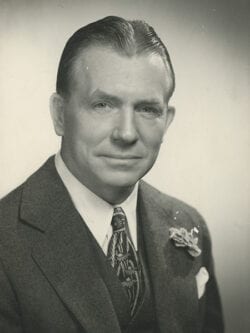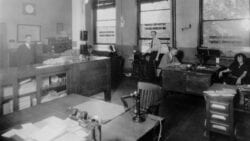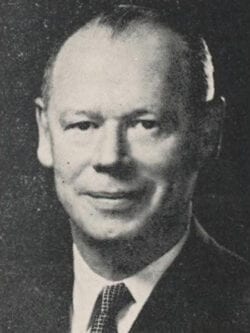How It All Began
It started on June 29, 1921, nearly 100 years ago. Wilbur-Ellis was brought to life out of necessity and opportunity.
The necessity was real back in those early days. After World War I ended in 1918, jobs were scarce. In 1921, the U.S. was in a brief but deep economic recession, with high unemployment and many businesses going bankrupt.
One of those businesses was Rogers Brown and Company. Based in Seattle, Wash., the firm imported vegetable and animal oils from Asia into the U.S. and Canada. When the business failed, its employees lost their jobs. And that’s when two young men, Brayton Wilbur (left) and Floyd Ellis, decided to make their own opportunity.
Wilbur and Ellis had become friends at the University of Washington, and after serving in the military they both went to work for Rogers Brown. When the company closed, the two were facing an uncertain future. But with the experience they’d gained in business, they decided to start a trading company of their own. Their old friend and former classmate Tom Franck joined them, and with $5,000 to get the venture off the ground, a new company was born.
The partnership papers were signed on June 29, 1921, and the company began operating in two small rooms of the Robert Dollar Building on California Street in San Francisco, Calif.
The business plan was clear: “Trade any lawful commodity on which a profit could legitimately and honorably be made,” according to an early history of the company.
The name of the enterprise generated more debate. Floyd Ellis thought the name should be Ellis and Wilbur. But Brayton Wilbur said, “No, let’s throw quarters for it.” Wilbur won and the name was settled. Thanks to a few lucky quarters, the new company would be called Wilbur-Ellis.
The “Roaring ’20s” and a Successful Start
Although Wilbur-Ellis began in a time of economic turmoil after World War I, in the U.S. the economy quickly rebounded. Returning soldiers reentered the labor force, munitions factories were retooled to produce consumer goods, and the “Roaring ’20s” lived up to its name.
At the company, canned fish and sardine oil and meal were the chief commodities handled. These products were a good fit, since they were produced at plants in San Francisco and nearby Monterey, Calif. The meal found a market as a fertilizer ingredient, with some of it going to Asian flower growers on the San Francisco Peninsula. The use of meal in poultry feeds was just beginning, and sardine oil also found a market in the Midwest, where soap manufacturers converted it to a hard tallow substitute.





